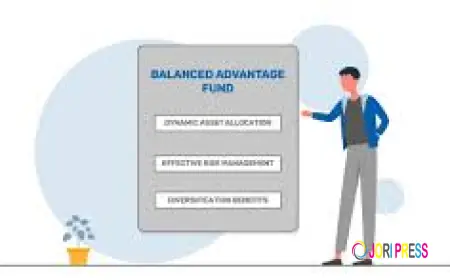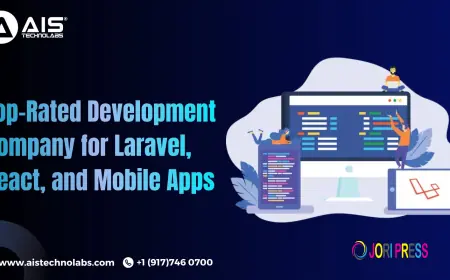Key Factors to Consider When Choosing the Right Tech Stack for Your Crypto Platform
Explore the essential factors for developing a successful crypto exchange. From selecting the right tech stack to ensuring performance, security, and seamless integration, this guide provides actionable insights to build a scalable, reliable, and future-proof crypto platform.

Table of Contents
Kickstart With Clear Project Goals
Scaling Without Complications
Fortifying Security Step by Step
Seamless Connections and Integrations
Developer-Friendly Tech Choices
Smart Budget and Maintenance Planning
Preparing for Tomorrow’s Trends
Kickstart With Clear Project Goals
Before starting any crypto platform development, the first step is to clearly define your project objectives. Understanding what your platform aims to achieve helps in selecting the right technologies. For instance, a crypto wallet development stack designed for high-speed transactions will require different tools than one for simple storage. If your project involves a crypto exchange keyword, knowing the type of exchange centralized or decentralized will influence the backend architecture. Important factors to consider in crypto platform development include the target audience, expected user base, types of cryptocurrencies supported, and essential functionalities such as trading, staking, or lending.
Clearly outlining these goals ensures your tech stack aligns with your vision, reduces unnecessary complexity, and sets a strong foundation for smooth development. It also provides a roadmap for developers, making collaboration more efficient and avoiding costly mistakes in later stages.
Scaling Without Complications
When building a crypto exchange keyword, scalability is critical to ensure smooth growth as your user base increases. The crypto wallet development stack must handle spikes in activity, particularly during market surges, without affecting performance. In crypto platform development, considering both horizontal scaling (adding more servers) and vertical scaling (enhancing server capacity) is vital. Key factors to consider in crypto platform development include transaction volume, simultaneous users, and uptime reliability.
Points to consider for seamless scaling:
-
Load Balancing: Efficiently distribute traffic across multiple servers to prevent bottlenecks.
-
Database Optimization: Choose high-performance databases capable of handling frequent read/write operations.
-
Caching Strategies: Temporarily store commonly accessed data to improve response times and reduce server load.
-
Monitoring Tools: Implement real-time monitoring to detect potential performance issues before they affect users.
-
Microservices Architecture: Breaking your platform into smaller services can improve scalability and maintainability.
Planning for scalability early ensures your platform remains reliable during high-demand periods and prevents costly reengineering. Users will enjoy a faster, uninterrupted experience, which is critical for retention and trust.
Fortifying Security Step by Step
Security is non-negotiable for any crypto exchange keyword. A secure platform safeguards user funds, sensitive data, and maintains trust in the ecosystem. The crypto wallet development stack must support strong encryption, secure authentication, and protection against common vulnerabilities. In crypto platform development, it’s also essential to perform regular audits, integrate anti-fraud systems, and comply with regulatory standards.
Factors to consider in crypto platform development include:
-
Encryption Standards: Protect data in transit and at rest using modern encryption protocols.
-
Two-Factor Authentication (2FA): Add an extra layer of user security to prevent unauthorized access.
-
Secure API Connections: Ensure third-party integrations do not expose sensitive data.
-
Regular Security Audits: Detects vulnerabilities before they become critical issues.
-
DDoS Protection: Maintain uptime even under potential cyberattacks.
A secure tech stack protects the platform from malicious attacks, enhances user confidence, and prevents potential financial and reputational damage. Investing in security early reduces costs associated with breaches later.
Seamless Connections and Integrations
A successful crypto platform must integrate effortlessly with external systems. In crypto platform development, your stack should allow connection with payment gateways, blockchain networks, KYC/AML services, and third-party APIs. A well-chosen crypto wallet development stack supports multiple protocols, enabling interoperability across platforms. Key factors to consider in crypto platform development include flexibility for future upgrades and compatibility with emerging blockchain technologies.
Integration capabilities also improve the user experience by providing a smoother, unified interface. For example, users can execute transactions across multiple networks or access fiat-to-crypto gateways without leaving the platform. By prioritizing interoperability, developers can reduce the time required for future expansions or feature additions, making the platform more adaptable in a fast-evolving crypto ecosystem.
Developer-Friendly Tech Choices
Choosing a developer-friendly stack simplifies crypto platform development, improves code quality, and speeds up deployment. A crypto wallet development stack should include widely supported languages, frameworks, and libraries, which help developers implement features efficiently. Key factors to consider in crypto platform development include:
-
Familiar Programming Languages: Reduces learning time and accelerates development.
-
Pre-Built Libraries and Modules: Simplifies feature implementation and minimizes coding errors.
-
Active Developer Community: Ensures easy access to support, troubleshooting, and updates.
-
Testing and Debugging Tools: Improve reliability and reduce post-launch issues.
Platforms built with developer-friendly stacks allow teams to work efficiently, introduce updates faster, and maintain high performance without excessive technical debt. This also enables smoother adoption of new features in the future.
Smart Budget and Maintenance Planning
Budget management is a key part of sustainable crypto platform development. The cost is influenced by your chosen crypto wallet development stack, hosting requirements, licensing, and ongoing maintenance. Key factors to consider in crypto platform development include:
-
Long-term maintenance and support
-
System upgrades and scalability costs
-
Technical debt and future-proofing
-
Open-source vs. proprietary tools
Selecting cost-effective technologies doesn’t mean compromising quality. Using open-source frameworks or widely adopted platforms can reduce initial costs while providing reliable performance. Planning for maintenance ensures the platform remains secure, functional, and adaptable to new requirements without unnecessary expenses.
Preparing for Tomorrow’s Trends
A forward-looking crypto platform development approach ensures your platform stays competitive. The crypto wallet development stack should support emerging blockchain features such as smart contracts, staking, NFTs, and cross-chain transactions. Important factors to consider in crypto platform development include modular architecture, flexibility for upgrades, and compatibility with new regulatory standards.
Future-proofing also includes adopting frameworks that allow easy integration of innovations without major redesigns. By choosing a stack that accommodates growth, your platform can attract a wider user base, adapt to market changes, and remain relevant in the fast-evolving crypto landscape. This proactive approach ensures long-term success and keeps your platform ahead of competitors.
What's Your Reaction?
 Like
0
Like
0
 Dislike
0
Dislike
0
 Love
0
Love
0
 Funny
0
Funny
0
 Angry
0
Angry
0
 Sad
0
Sad
0
 Wow
0
Wow
0
















































